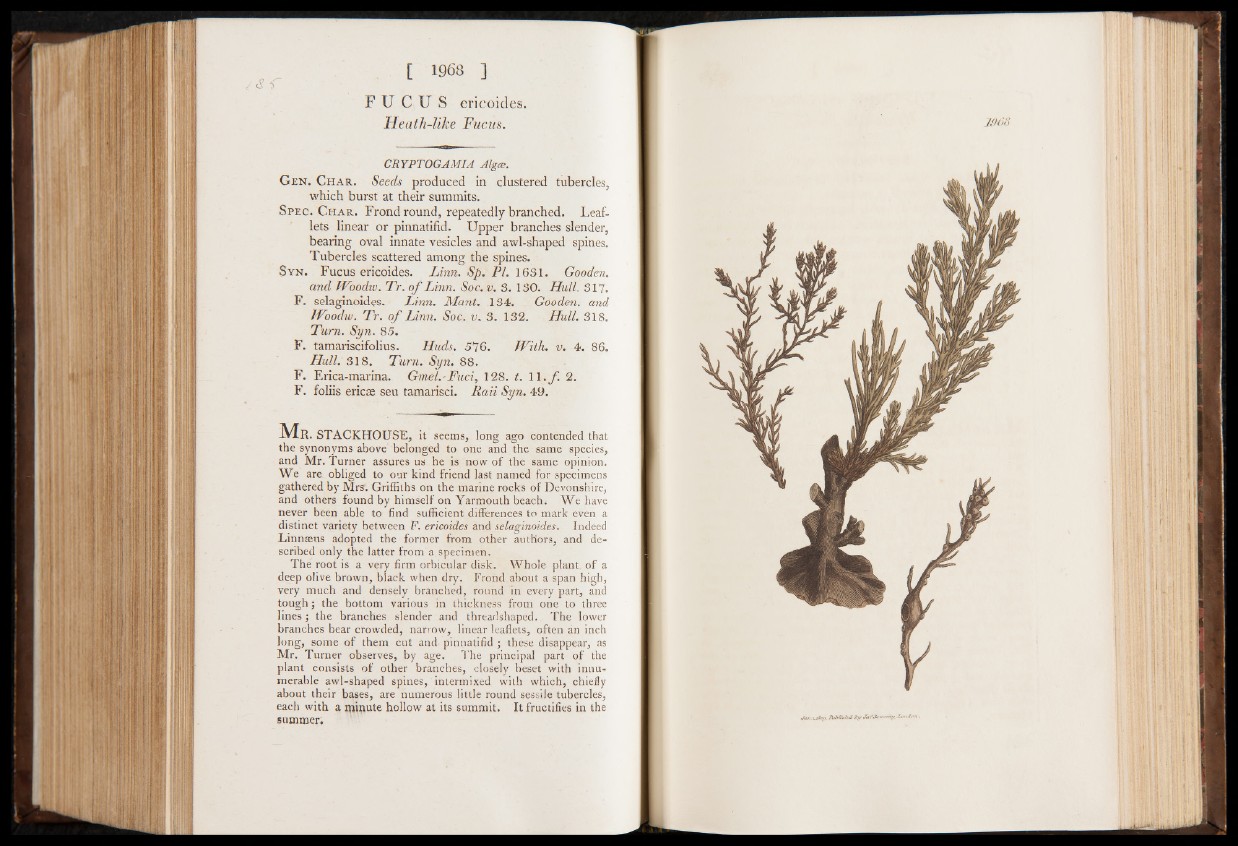
[ 1968 ]
F U C U S ericoides.
Heath-like Fucas.
CRYPTOGAMIA Algce.
G e n . C h a r . Seeds produced in clustered tubercles,
which burst at their summits.
S p e c . C h a r . Frond round, repeatedly branched. Leaflets
linear or pinnatifid. Upper branches slender,
bearing oval innate vesicles and awl-shaped spines.
Tubercles scattered among the spines.
S y n . Fucus ericoides. Linn. Sp. PI. 1631. Gooden,
and Woodw. Tr. o f Linn. Soc. v. 3. 130. Hull. 317.
F. selaginoidcs. Linn. Mant. 134. Gooden, and
Woodw. Tr. o f Linn. Soc. v. 3 . 132. Hull. 318.
Turn. Syn. 85.
F. tamariscifolius. Huds. 5 7 6 . With. v. 4 . 86.
Hull. 3 1 8 . Turn. Syn. 88.
F. Erica-marina. Gmel.-Fuci, 128. t. 11 .ƒ. 2.
F. foliis ericse seu tamarisci. Raii Syn. 4 9 .
IVIr . STACKHOUSE, it seems, long ago contended that
the synonyms above belonged to one and the same species,
and Mr. Turner assures us he is now of the same opinion.
We are obliged to our kind friend last named for specimens
gathered by Mrs'. Griffiths on the marine rocks of Devonshire,
and others found by himself on Yarmouth beach. We have
never been able to find sufficient differences to mark even a
distinct variety between F. ericoides and selaginoides. Indeed
Linnaeus adopted the former from other authors, and described
only the latter from a specimen.
The root is a very firm orbicular disk. Whole plant, of a
deep olive brown, black when dry. Frond about a span high,
very much and densely branched, round in every part, and
tough; the bottom various in thickness from one to three
lines; the branches slender and threadshaped. The lower
branches bear crowded, narrow, linear leaflets, often an inch
long, some of them cut and pinnatifid ; these disappear, as
Mr. Turner observes, by age. T he principal part of the
plant consists of other branches, closely beset with innumerable
awl-shaped spines, intermixed with which, chiefly
about their bases, are numerous little round sessile tubercles,
each with a minute hollow at its summit. It fructifies in the
summer.